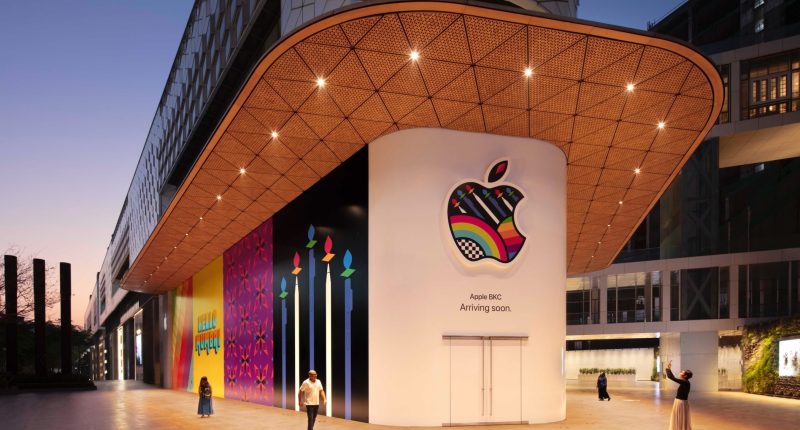For years, India has been a challenging market for Apple to crack. Dominated by affordable Chinese brands and a strong preference for cheap Android devices, iPhones have struggled to gain significant traction. Now, according to media reports, the annual sales of the tech behemoth in the world’s second-largest internet market skyrocketed to a record-breaking $8 billion in the year ending March 2024.
This marks a total growth of 33% from the previous year’s $6 billion.
The reasons behind this growth are manifold. For one, the nation’s burgeoning economy is witnessing a rise in disposable income, creating a fertile ground for premium smartphone brands like Apple. As consumer purchasing power strengthens, iPhones are becoming increasingly attractive to a growing segment of the population. For another, the iPhone-maker is actively looking to lessen its dependence on China for manufacturing and revenue generation. The ongoing trade tensions between the US and China have further fueled this strategy. India, with its large workforce and growing manufacturing base, presents a compelling alternative. Currently, Apple manufactures the iPhone 15 in India, with plans to potentially expand production to higher-end models in the future.
Furthermore, the launch of the first two Apple Stores in India last year marked a significant step towards boosting brand presence and customer experience. These stores offer a wider range of Apple products, allowing consumers to interact with the brand directly and explore the entire Apple ecosystem. By ramping up iPhone production facilities within India, Apple is not only reducing reliance on Chinese manufacturing but also improving product availability within the Indian market. This not only shortens delivery times but potentially makes iPhones more accessible due to reduced import costs.
Despite the positive sales figures, Apple still faces significant challenges in the Indian market. For one, the domestic smartphone market is heavily saturated with affordable Android devices from Chinese brands like Xiaomi, Vivo, and Oppo. These brands cater to a budget-conscious customer base, making it difficult for Apple’s premium-priced iPhones to compete solely on price. For another, while Apple is experiencing rapid growth, its overall market share in India remains relatively low. iPhones currently account for only about 3.5% of the roughly 690 million smartphones in use within the country. And to add to this, Apple also faces competition from its long-standing rival, Samsung. Samsung offers a wider range of smartphones at various price points, catering to a broader audience in the Indian market.
The Tech Portal is published by Blue Box Media Private Limited. Our investors have no influence over our reporting. Read our full Ownership and Funding Disclosure →






